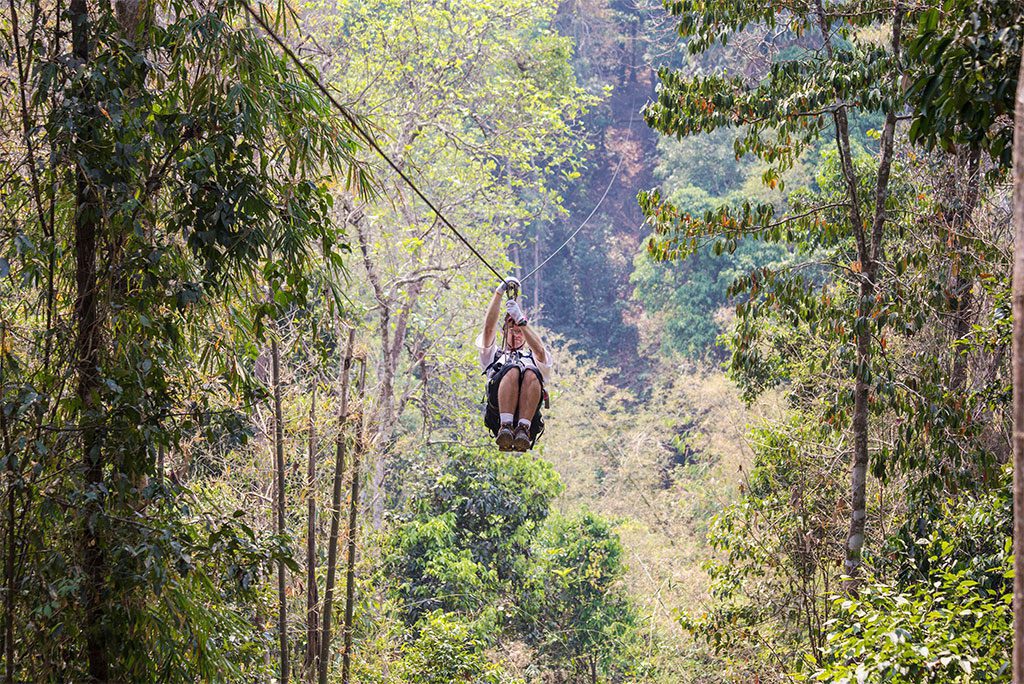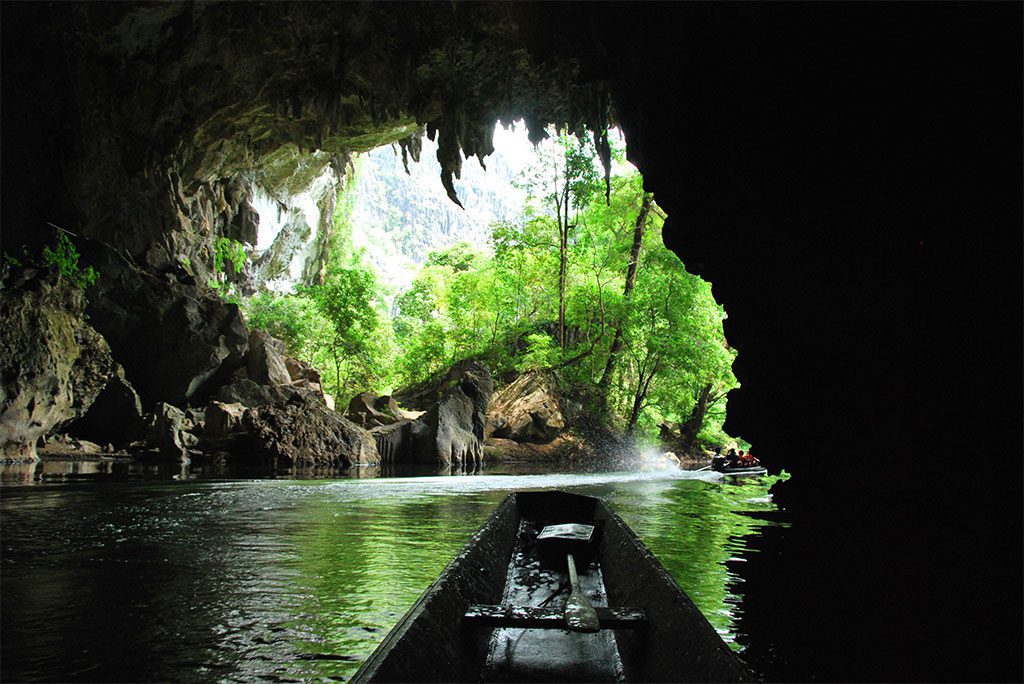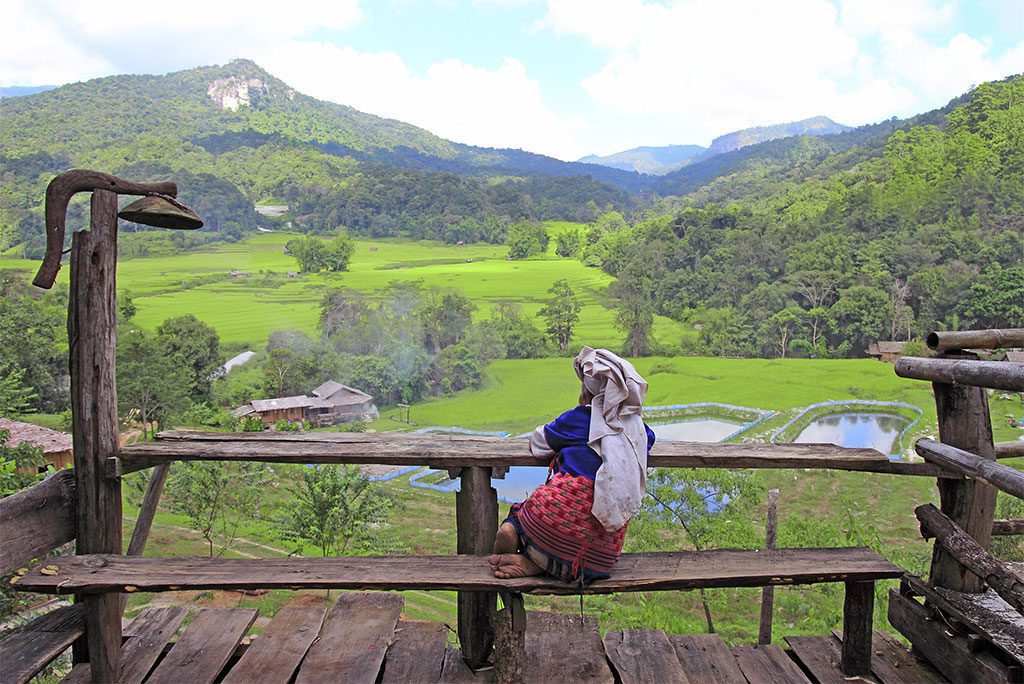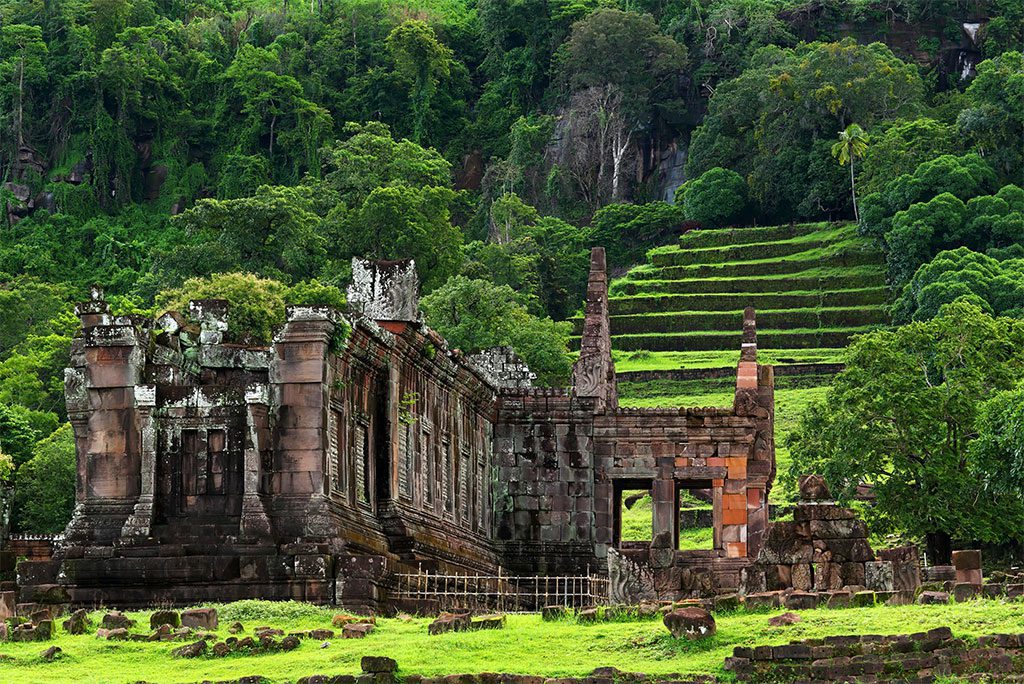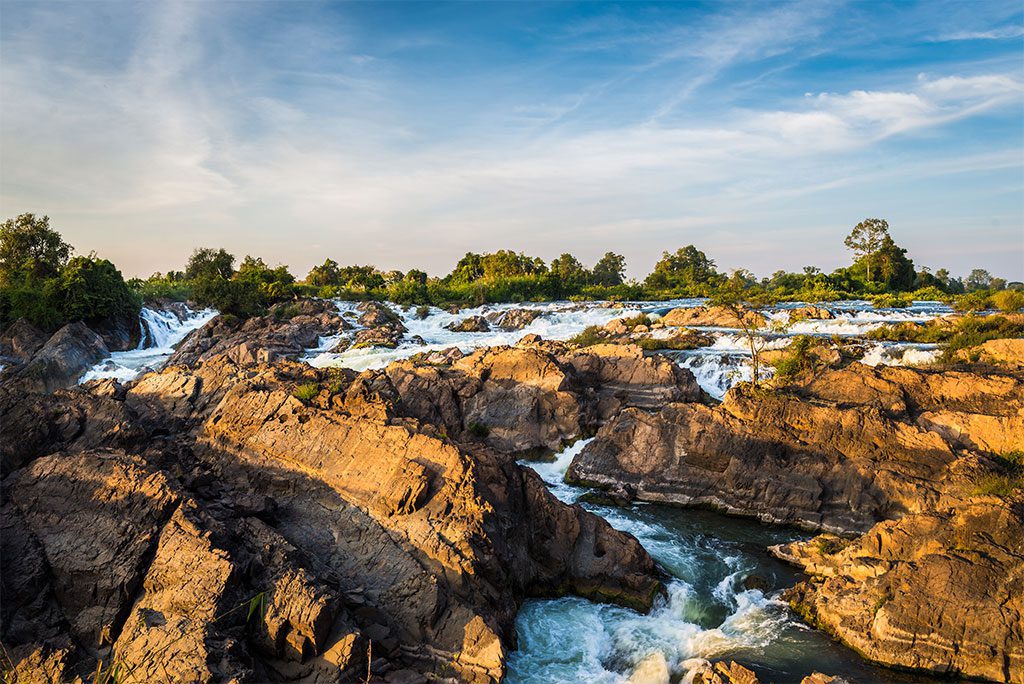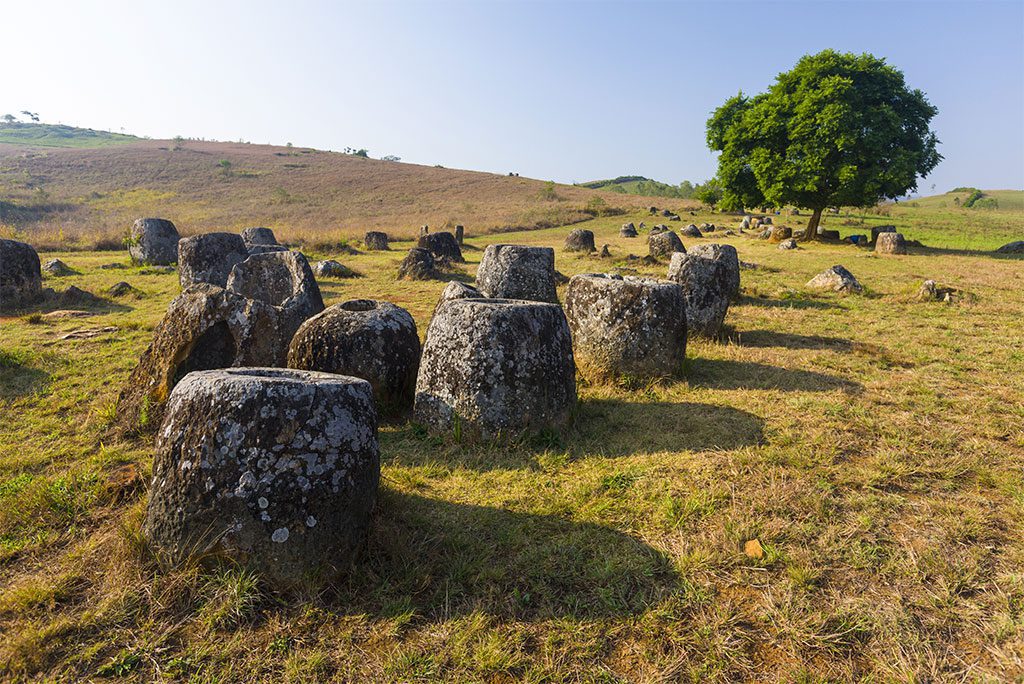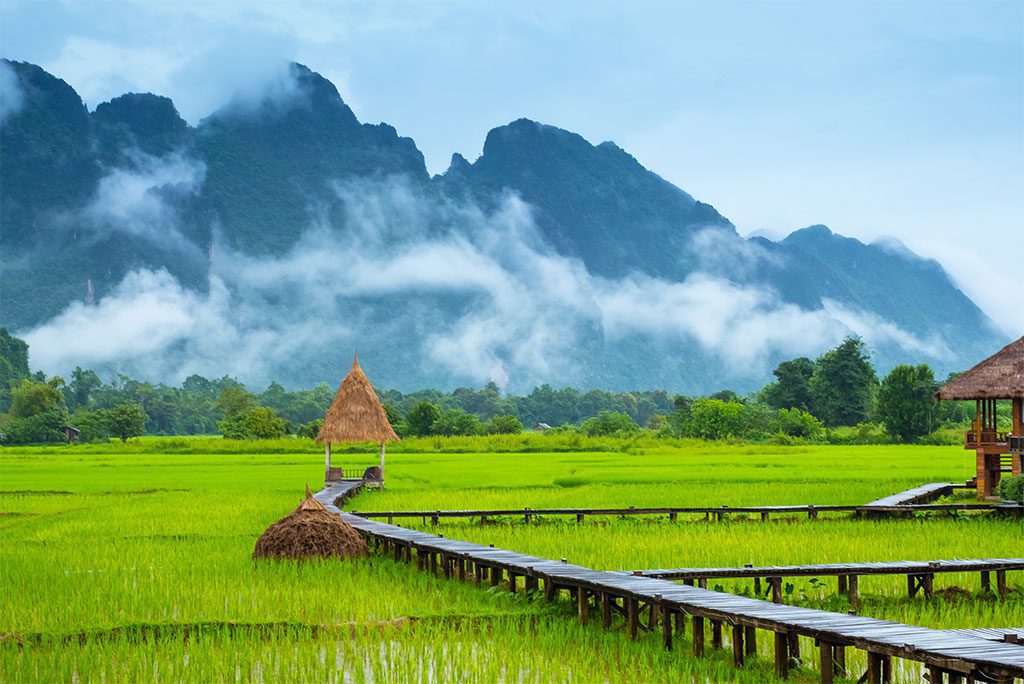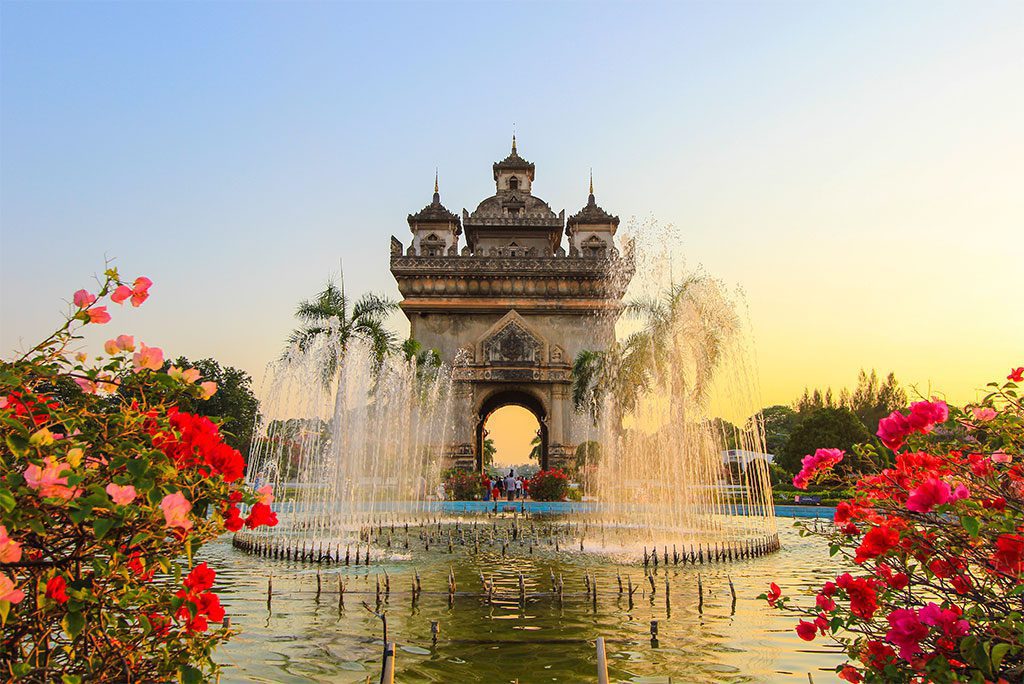Located in Southeast Asia, Laos is a peaceful landlocked nation. Laos is sometimes overshadowed by its more well-known neighbours, Thailand, Vietnam, and Cambodia, but it has lots to offer with the added bonus of fewer crowds.
A trip to this little Southeast Asian nation will not break the bank, and you won’t have to sacrifice excitement for affordability. Discover the unspoiled side of Laos by travelling to its lush, undulating highlands, winding rivers, and hidden Laotian villages. Discover remote hill tribes, plunge into gushing waterfalls, and skulk through dark caverns—your travels in Laos are sure to be action-packed.
10. Bokeo Nature Reserve
Once assumed to be extinct, the black-cheeked gibbon was found in 1997, prompting the establishment of the Bokeo Nature Reserve to safeguard the species’ last population. A stay at the Gibbon Experience is required in order to get the full ecotourism and conservation experience of Bokeo Nature Reserve. A trip to find the Black Gibbon involves staying in tree huts and zipping through the jungle.
Guests to the reserve may also see elephants, bears, tigers, and wild buffalo, in addition to the evasive black gibbon. Poached animals who are brought to The Gibbon Experience are rehabilitated and released back into the wild. The reserve is a great area to see a variety of birds due to its diverse topography, which includes mountains between 1,600 and approximately 5,000 feet in elevation.
9. Nong Kiau
There are various hiking, mountain biking, and other outdoor activities to enjoy at Nong Kiau, also known as Nong Khiaw, in Luang Prabang Province. The Chinese-built bridge across the Nam Ou River is an impressive sight. There are beautiful river and mountain views from the bridge that joins the two halves of Nong Kiau. Visitors to Nong Kiau, a rural community, should not anticipate five-star facilities. The Pha Tok Caves are situated approximately a mile outside of town and may be of interest to spelunkers. During the Second Indochina War, residents took refuge in the caverns.
8. Tham Kong Lo
Amazing subterranean karst limestone cave, Tham Kong Lo can be found in Central Laos’s Phou Hin Bun National Park. The cave is only accessible via longtail boat, and its name, Konglor Cave, translates to “beauty in the dark.” Using just the light provided by your magical miner’s lamps, you may chug down one of the world’s longest river cave systems.
At some spots, the boats will dock so that you can get out and explore the cave on foot. What was previously a completely dark cave exploration is now a fascinating and spectacular light display.
The journey to Tham Kong Lo from Vientiane takes eight hours by bus on a route full of potholes, making it not the easiest place in the nation to get to. Despite this, people come from all over to explore its hidden chambers and marvel at its stalactites and other bizarre limestone formations.
7. Luang Namtha
Located in the northern Laotian province of the same name, Luang Namtha translates to “the area surrounding the Tha River.” The village along the Nam Tha, one of the Mekong’s twelve tributaries, serves mostly as a stopover for backpackers travelling between China and Laos, or as a means to break up the longboat voyage between Huay Xai and Luang Prabang.
Its proximity to the Lao hill tribes in the Luang NamTha National Protected Area is one of the highlights of a trip to this area. Luang Namtha itself is not very interesting, but the town is home to the Luang Namtha Museum, an anthropological institution dedicated to shedding light on the region’s remarkable indigenous peoples. Old and modern sections of the town exist side by side, with the former providing an intriguing historical find due to the bombing it endured during the conflict in the 1970s.
It’s typical for villagers to provide discounts on NPA hiking expeditions, so it’s worth shopping around to find one. Mountain biking, kayaking, and excursions to waterfalls are just a few of the optional extras that are offered on many tours. Mountain bikes and motorcycles may be rented so that independent explorers can go at their own leisure through the local jungle and communities.
6. Wat Phu
A Hindu temple complex built by the ancient Khmers, Wat Phu Champasak (also spelled Vat Phou Champasak) consists of six terraces and three stories. Wat Phu, which literally translates to “Mountain Temple,” is located at the foot of Mount Phou Khao and is home to structures that are well over a thousand years old.
As time progressed, more and more buildings were added. The current remains of Wat Phu Champasak date back to the 11th and 13th centuries, respectively. Wat Phou, an old temple dedicated to Lord Shiva (one of the Hindu Trimurti), is the city’s most famous landmark. It has stunning Buddha statues, a holy spring, and elaborate sculptures. In the thirteenth century, the sanctuary was transformed into a Buddhist monastery.
Stay in one of the adjacent villages with its French colonial homes and Buddhist temples if you plan on spending more time in Champasak than just passing through. If you’re in town in the evening, you shouldn’t miss the shadow puppet presentations.
5. Si Phan Don
Located in the Khong District of southern Laos, Si Phan Don translates to “Four Thousand Islands.” These islands range in size and shape and are scattered along the Mekong River. Don Khong, the biggest island, is home to a museum and a few temples, but other than that, there isn’t much to do there, and since half the islands are submerged every year due to the Mekong River’s regular flooding, there’s not much need to visit them anyhow.
Si Phan Don, however, makes up for this by providing a picturesque background of rice paddies, waterfalls, and farms dotted with riverbank houses. Si Phan Don is located on the Laotian side of the border with Cambodia, and as such, its culture is a fascinating blend of Lao and Cambodian influences. Time may be well spent shooting the ruins of the French-built Don Khon narrow gauge railway and looking for freshwater Irrawaddy dolphins off the shore of Don Khong.
Those who are unable to appreciate the tranquillity of this river archipelago may nonetheless keep themselves occupied. Discover one of the major Mekong Falls by bike, boat, or foot as you go between the two main islands, Don Det and Don Khon.
4. Phonsavan
Located in central Laos, Phonsavan is the seat of Xieng Khouang Province and serves as the main entry point to the Plain of Jars. Hmong cowboys tend to their livestock in the pastures among brilliantly painted wooden homes that were constructed during the Second Indochina War.
The picturesque town of Phonsavan (whose name translates to “Hills of Paradise”) has a pleasant temperature throughout the year because of its location in the midst of rolling hills and pine trees. The megalithic archaeological environment of Laos, consisting of thousands of stone jar-like structures spread over the country’s valleys, is the country’s principal draw. At one of the most well-known ancient sites in Southeast Asia, these strange stone jars are said to have been used as burials or to hold rice wine.
However, if you are an outdoor enthusiast, Phonsavan has a lot more to offer than just the Plain of Jars. Hikers will find a wealth of natural wonders on the outskirts of town, from hidden caverns and ponds to gushing waterfalls.
3. Vang Vieng
Vang Vieng, a city on the Mekong River, is well-known for its beauty and charm. Vang Vieng is a rural hamlet in Central Laos that caters to youthful travellers in search of a crazy nightlife.
There is a wide variety of places to stay in town, from hostels to guest homes, as well as several restaurants and pubs that stay open late during the busy season. Vang Vieng is a great base for day outings, and tours to popular destinations like the Blue Lagoon may be arranged at any of the numerous tour booths dotted throughout town.
Floating down the river on inner tubes and stopping at different riverside bars is one of Vang Vieng’s most popular tourist attractions. Because of the many accidents that have occurred in tubing bars in the past (to be expected, given the combination of alcohol and young people), the activity has been all but eliminated from Laos.
After a day of partying and tubing with friends down Vang Vieng’s picturesque river, go to the surrounding limestone karst-filled mountains for some hiking or rock climbing.
2. Vientiane
Being the biggest city in Laos and the country’s capital, Vientiane is definitely worth seeing. You can easily spend a few days exploring this little town and not feel rushed.
Historically a French trade centre, modern-day visitors to Vientiane rarely go beyond the airport. A walk down the Mekong River after dusk, stopping at one of the riverfront marketplaces, is the ideal way to get to know Vientiane, despite the city’s many temples.
In this city, often known as “the city of sandalwood,” the Buddhist stupa Pha That Luang, built in 1586, is the most visited landmark by far. The stupa is 49 metres (147 feet) in height and is said to house Buddha’s remains. Another renowned attraction, Wat Si Muang, was constructed on the site of an ancient Khmer Hindu temple.
1. Luang Prabang
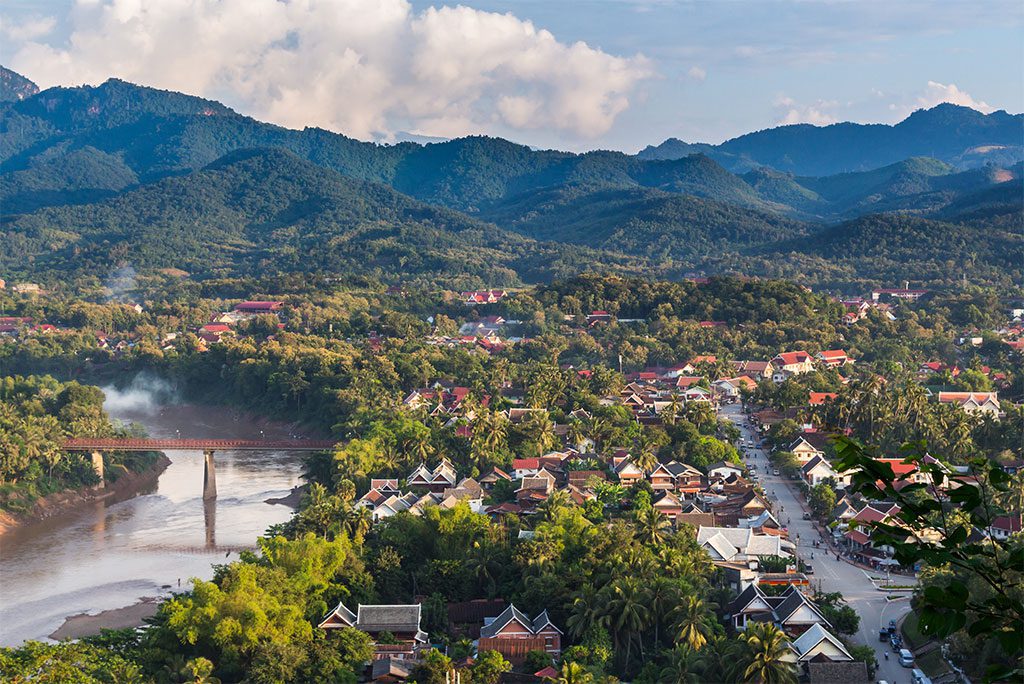
Enjoy the tranquil and breathtaking vistas from the viewpoint in Luang Prabang. Image source: Tortoon/Shutterstock.com
Historic Luang Prabang, originally the capital of the Kingdom of Laos, is the most visited location in the country. In modern times, it has remained the de facto tourist centre. Luang Prabang is a beautiful city located at the confluence of the Mekong and Nam Khan rivers, with a majestic temple overlooking the scene. Considered as a whole, it is undeniably one of Southeast Asia’s most visually appealing urban centres. Luang Prabang may be small, but it is not short of attractions.
You should get up early in Luang Prabang to see the tak bat, when hundreds of monks in saffron robes quietly walk through the streets in search of alms. Discover over 2,000 plant types at the Pha Tad Ke Botanical Garden and take your time haggling for trinkets and rice wine at the nearby street market.
You may use Luang Prabang as a jumping off point to see some of Laos’ top sights. Among them, the most common is a trip to the beautiful Kuang Si Falls, a multi-tiered cascade with many fast-moving pools where brave visitors may go swimming.


